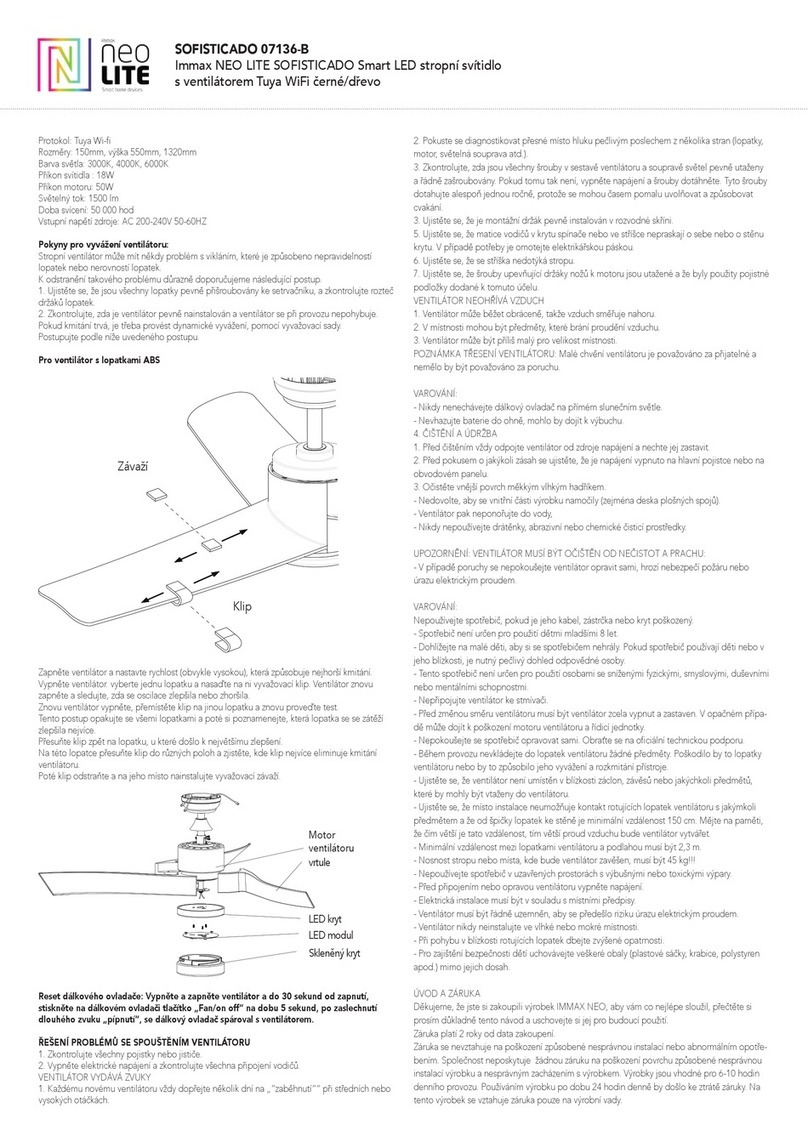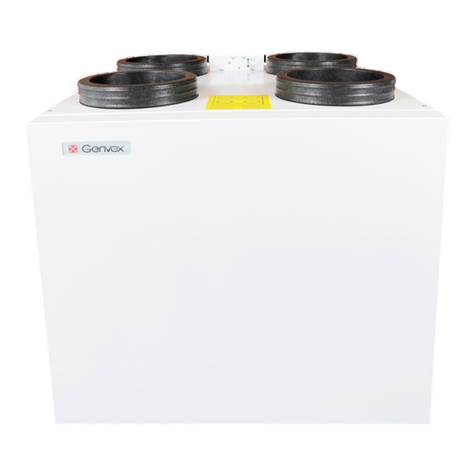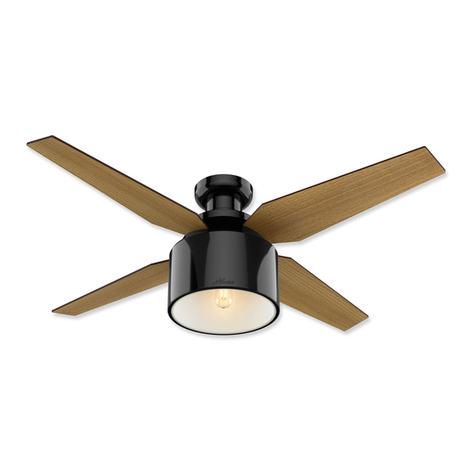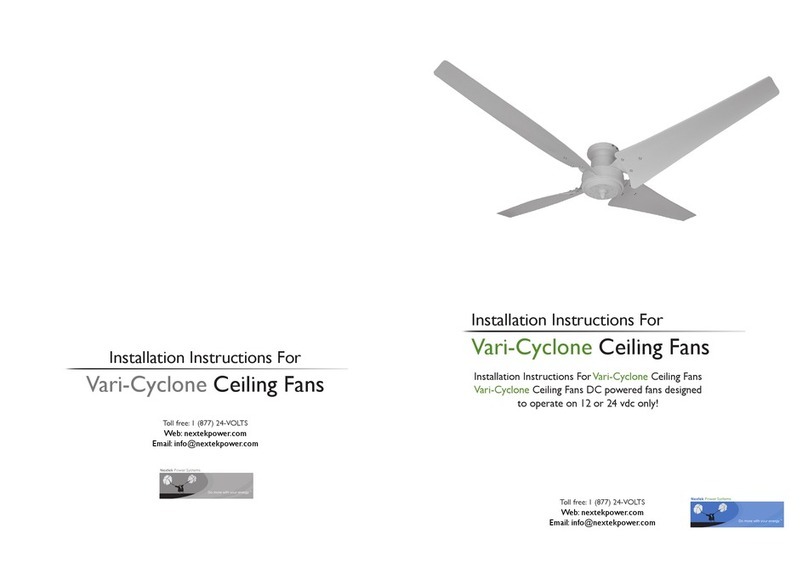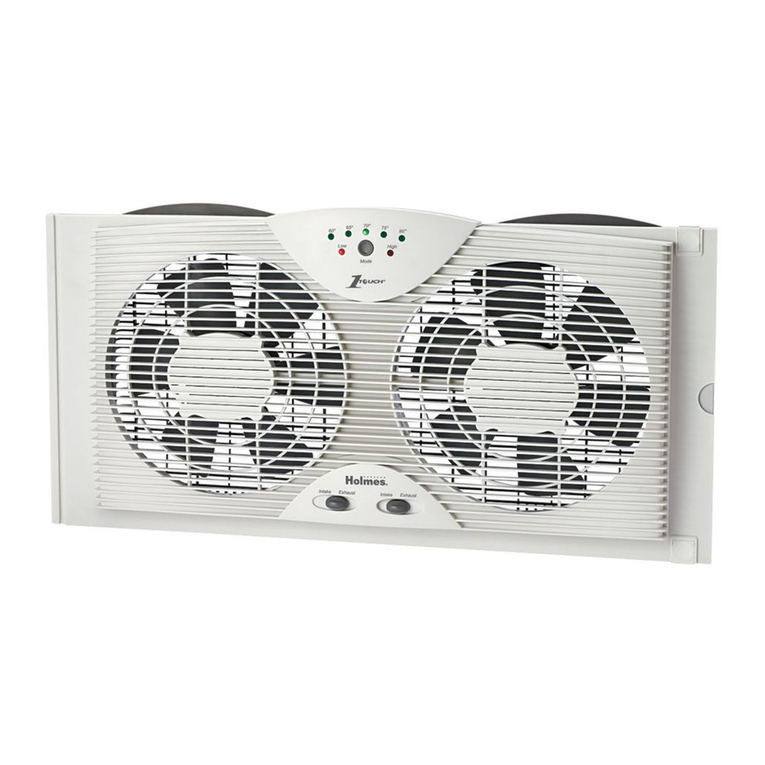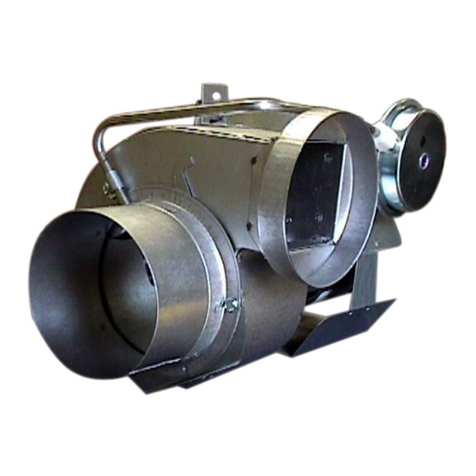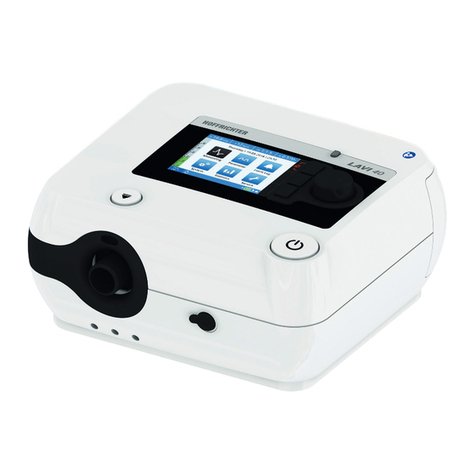BKI FH-28WM User manual

Ventless Hood System
MODEL FH-28WM WALL-MOUNT
Operation & Installation
Serial Numbers 120646 and Higher

BKI
LIMITED
WARRANTY
PO Box
80400
•
Simpsonville,
SC
29680-0400
•
USA
(864)
963-3471
•
Toll
Free: (800)
927-6887
•
Fax:
(864) 963-5316
Asia
Europe
Latin America
North America
WHAT IS
COVERED
This warranty covers defects in material and workmanship under normal use, and applies only to the original
purchaser providing that:
The equipment has not been accidentally or intentionally damaged, altered or misused;
The equipment is properly installed, adjusted, operated and maintained in accordance with national and local
codes, and in accordance with the installation and operating instructions provided with this product.
The serial number rating plate affixed to the equipment has not been defaced or removed.
WHO IS
COVERED
This
warranty
is
extended
to the original
purchaser
and applies only
to
equipment purchased
for use
in the U.S.A.
COVERAGE PERIOD
Warranty claims must be received in writing by BKI within one (1) year from date of installation or
within one (1) year and three (3) months from data of shipment from the factory, whichever comes
first.
COB Models: One (1) Year limited parts and labor.
COM Models: Two (2) Year limited parts and labor. COM convection ovens also have a two (2) year door
warranty.
CO1 Models: Two (2) Year limited parts and labor. Five (5) Year limited door warranty.
BevLes Products: Two (2) Year limited parts and labor.
Warranty period begins the date of dealer invoice to customer or ninety (90) days after shipment date
from BKI, whichever comes first.
WARRANTY
COVERAGE
This
warranty
covers on-site labor, parts and
reasonable
travel
time
and travel
expenses
of the
authorized
service
representative
up
to
(100) miles
round
trip and (2)
hours
travel time and
performed
during
regular,
weekday
business
hours.
EXCEPTIONS Any exceptions must be pre-approved in advance and in writing by BKI. The extended door warranty on
convection ovens years 3 through 5 is a parts only warranty and does not include labor, travel, mileage or
any other charges.
EXCLUSIONS
Negligence
or acts of
God,
Thermostat
calibrations
after (30) days
from
equipment
installation
date,
Air and g
as
adjustments,
Light
bulbs,
Glass doors and
door
adjustments,
Fuses,
Adjustments
to
burner
flames and
cleaning
of
pilot
burners,
Tightening
of screws
or
fasteners,
Failures
caused
by erratic
voltages
or gas
suppliers,
Unauthorized
repair by
anyone
other
than
a BKI F
actory
Authorized
Service Center,
Damage
in
shipment,
Alteration,
misuse or
improper
installation,
Thermostats
and safety valves with
broken
capillary tubes,
Freight
–
other
than
normal UPS charges,
Ordinary
wear and
tear,
Failure to follow
installation
and/or
operating
instructions,
Events
beyond
control
of the
company.
INSTALLATION
REPLACEMENT PARTS
Leveling, as well as
proper
installation
and check out of all
new
equipment
-
per
appropriate
installation
and use materials – is t
he
responsibility of the
dealer
or installer, not the
manufacturer.
BKI
genuine
Factory OEM parts receive a (90) day
materials
warranty
effective from the date of
installation
by a BKI F
actory
Authorized
Service
Center.
Warranty
is in lieu of all
other
warranties,
expressed
or implied, and all
other
obligations
or liabilities
on the
manufacturer’s
part. BKI shall in no
event
be liable for any
special,
indirect
or
consequential
damages,
or in any
event
for
damages
in excess of the
purchase
price of the unit. The repair or
replacement
of
proven
defective
parts shall
constitute
a
fulfillment of all
obligations
under
the terms
of this
warranty.

Ventless Hood System Table of Contents
1
Table of Contents
Table of Contents........................................................................................................................................1
Introduction .................................................................................................................................................2
Safety Precautions....................................................................................................................................2
Safety Signs and Messages.................................................................................................................2
Specific Precautions.............................................................................................................................3
Safe Work Practices.............................................................................................................................3
Approvals Information..............................................................................................................................5
Fusible Links.........................................................................................................................................5
Pressure/Open Fryers..........................................................................................................................5
Sandwich Grills.....................................................................................................................................5
Fryers Specifications............................................................................................................................6
Griddles Specifications.........................................................................................................................6
Safety Labels............................................................................................................................................7
Installation ...................................................................................................................................................8
Unpacking and Handling...........................................................................................................................8
Inspection for Shipping Damage..........................................................................................................8
Location and Clearance .......................................................................................................................8
Assembly and Mounting ...........................................................................................................................8
Air Deflector..........................................................................................................................................8
Fire Damper..........................................................................................................................................9
Particle/Odor Filter................................................................................................................................9
Restraining Device ...............................................................................................................................9
Fire Extinguishing System..................................................................................................................10
Wiring......................................................................................................................................................11
Standard Electrical Connection..........................................................................................................11
Appliance Electrical Connection.........................................................................................................12
Operation ...................................................................................................................................................13
Principle of Operation.............................................................................................................................13
Preparation .............................................................................................................................................13
Start-Up...................................................................................................................................................13
Shut-Down..............................................................................................................................................13
When to Replace the Filter.....................................................................................................................14
Cleaning..................................................................................................................................................14
Maintenance ..............................................................................................................................................15
Scheduled Maintenance.........................................................................................................................15
Cleaning the Grease Baffle................................................................................................................16
Replacing the Particle/Odor Filter ......................................................................................................16
Notes ..........................................................................................................................................................17

Ventless Hood System Introduction
2
Introduction
Congratulations! You have chosen BKI’s Ventless Hood system, a state-of-the-art unit that filters grease
laden air and returns it to the room.
The BKI name and trademark on this unit assures you of the finest in design and engineering -- that it has
been built with care and dedication -- using the best materials available. Attention to the operating
instructions regarding proper operation, installation and maintenance will result in long lasting
dependability to insure the highest profitable return on your investment.
PLEASE READ THIS ENTIRE MANUAL BEFORE OPERATING THE UNIT. If you
have any questions, please contact your BKI Distributor. If they do not answer
your questions, contact the BKI Technical Service Department, toll free: 1-800-
927-6887. Outside the U.S., call 1-864-963-3471.
Safety Precautions
Always follow recommended safety precautions listed in this manual. Below is the safety alert symbol.
When you see this symbol on your equipment, be alert to the potential for personal injury or property
damage.
Safety Signs and Messages
The following Safety signs and messages are placed in this manual to provide instructions and identify
specific areas where potential hazards exist and special precautions should be taken. Know and
understand the meaning of these instructions, signs, and messages. Damage to the equipment, death or
serious injury to you or other persons may result if these messages are not followed.
This message indicates an imminently hazardous situation, which, if not avoided,
will result in death or serious injury.
This message indicates a potentially hazardous situation, which, if not avoided,
could result in death or serious injury.
This message indicates a potentially hazardous situation, which, if not avoided,
may result in minor or moderate injury. It may also be used to alert against
unsafe practices.
This message is used when special information, instructions or identification are
required relating to procedures, equipment, tools, capacities and other special
data.

Ventless Hood System Introduction
3
Specific Precautions
Carbon monoxide poisoning will result from using this hood with any appliance
that utilizes combustible fuel. Use only electrical appliances with this hood.
In the event of an appliance fire, serious injury, property damage or death could
occur if the appliance is not properly secured to the hood. A restraining device
has been provided to assure that the appliance remains in the proper position
under the hood during normal operation. DO NOT REMOVE THE
RESTRAINING DEVICE!
Hood failure could result if the hood is operated without the grease baffle and
particle/odor filter installed. This is a special filter designed for this application
only; other filters will not work properly. Use only a BKI particle/odor filter.
Safe Work Practices
Beware of High Voltage
This equipment uses high voltage. Serious injury can occur if you or
any untrained or unauthorized person installs, services, or repairs this
equipment. Always Use an Authorized Service agent to Service Your
Equipment
Keep this manual with the Equipment
This manual is an important part of your equipment. Always keep it
near for easy access. If you need to replace this manual, contact:
BKI
Technical Services Department
P.O. Box 80400
Simpsonville, S.C. 29680-0400
Or call toll free: 1-800-927-6887
Outside the U.S., call 864-963-3471
Protect Children
Keep children away from this equipment. Children may not understand
that this equipment is dangerous for them and others.
NEVER allow children to play near or operate your equipment.

Ventless Hood System Introduction
4
Keep Safety Labels Clean and in Good
Condition
Do not remove or cover any safety labels on your equipment. Keep all
safety labels clean and in good condition. Replace any damaged or
missing safety labels.
If you need new safety labels, contact:
BKI
Technical Services Department
P.O. Box 80400
Simpsonville, S.C. 29680-0400
Or call toll free: 1-800-927-6887
Outside the U.S., call 864-963-3471
911
Prepare for Emergencies
Be prepared for fires, injuries, or other emergencies.
Keep a first aid kit and a fire extinguisher near the equipment. You
must use a 40-pound Type BC fire extinguisher and keep it within 25
feet of your equipment.
Keep emergency numbers for doctors, ambulance services, hospitals,
and the fire departments near your telephone.
Know your responsibility as an Employer
Make certain your employees know how to operate the equipment.
Make certain your employees are aware of the safety precautions
on the equipment and in this manual.
Make certain that you have thoroughly trained your employees
about operating the equipment safely.
Make certain the equipment is in proper working condition. If you
make unauthorized modifications to the equipment, you will reduce
the safety and function of the equipment.

Ventless Hood System Introduction
5
Approvals Information
Failure to adhere to building, fire and electrical codes during installation of this
unit could result in death, serious injury or property damage. The authority having
jurisdiction, such as the local building inspector or fire marshal, should be
consulted prior to installation to insure compliance with applicable codes.
In the event of an appliance fire, serious injury, property damage or death could
occur if the appliance is powered from a source other than the hood. The cooking
appliance used under this hood MUST receive its input power from the hood.
Electricity is automatically removed from the hood and the appliance when the
Fire Extinguishing System is activated.
In the event of an appliance fire, serious injury, property damage or death could
occur if the remote pull station is not properly installed. The remote pull is to be
clearly marked, located in a path of exit or egress and must comply with
applicable codes.
It is the responsibility of the owner to verify that the cooking appliance is eligible
for use with this hood.
This filter hood is an ETL Listed ductless hood for use with Listed commercial
cooking appliances only (griddle or fryer).
Fusible Links
Fusible links to be UL Listed, 165F., load rating 3-45 lbs.
Pressure/Open Fryers
Pressure fryers acceptable for use with this hood shall be constructed such that when the lid is
released or unlatched it shall spring to the fully open position within four seconds. Fully open is
defined as vertical, upright position (80or more) from the closed position. The lid must open
without operator or electrical assistance, toward the back of the hood.
The lid of the pressure fryer, when it is open, shall not block fire-extinguishing nozzle from the vat.
The lid of a pressure fryer should be checked for proper operation at least once a month. If the lid
fails to fully open when unlatched or released, it should be repaired immediately by factory
authorized service personnel. Do not operate a fryer with a defective lid opening mechanism.
Fryers with lids (other than pressure fryers) shall be operated only with the lid removed. Lids may
be used for covering the vat when power to the cooking appliance and hood has been turned off.
Sandwich Grills
Sandwich grills acceptable for use with this hood shall be used such that when the lid is either
fully open, released, or unlatched it shall spring to the fully open position. Fully open is defined as
vertical, upright position (80or more) from the closed position. The lid must open toward the
back of the hood. The lid of a sandwich grill, when open shall not block fire extinguishing nozzles
from the cooking surface.

Ventless Hood System Introduction
6
Fryers Specifications
Volts 208/240
Phase 1 or 3
Maximum Amps 60
Maximum Input 22 KW (3ph) 14.4 KW (1ph)
Frequency 60 Hz
Maximum normal frying temperature 375F. (191C.)
Maximum shortening capacity 110 lbs. (50kg.)
Maximum cooking surface area 396 sq. in. (2555 sq. cm.)
USE ELECTRIC FRYERS AND SINGLE VAT
FRYERS ONLY
Griddles Specifications
Volts 208/240
Phase 1 or 3
Maximum Amps 38.5
Maximum Input 8 KW
Frequency 60 Hz
Maximum griddle surface area 450 sq. in. (2903 sq. cm.)
Maximum cooking surface temperature 450F. (232C.)
USE ELECTRIC GRIDDLES ONLY

Ventless Hood System Introduction
7
Safety Labels

Ventless Hood System Installation
8
Installation
Unpacking and Handling
Inspection for Shipping Damage
YOU are responsible for filing all freight claims with the delivering truck line. Inspect all cartons and crates
for damage as soon as they arrive. If damage to cartons or pallets is found, or if a shortage is found, note
this on the bill of lading (all copies) prior to signing and receiving.
If damage is found when the equipment is opened, immediately call the delivering truck line and follow up
the call with a written report indicating concealed damage to your shipment. Ask for an immediate
inspection of your concealed damage item. Packaging material MUST be retained to show the inspector
from the shipping line.
Location and Clearance
Place the Filter Hood in a location with clearance according to the data below. These distances provide
for proper clearance to combustible surfaces, access for maintenance, and proper air flow from hood exit
vent.
MINIMUM CLEARANCE HOOD TO COMBUSTIBLE
18 in. SIDES, 0 in. BACK, 0 in. TOP, 0 in. BOTTOM
NON-COMBUSTIBLE REAR WALL REQUIRED FOR FH-28 WALL MOUNT
APPLIANCE CLEARANCE
Vat to sides of hood: 6.25 in. (FH-28)
Griddle to sides of hood: 0 in., Sandwich grills to sides of hood: 6 in.
Cooking surface must be at least 3.5 inches behind the front edge of the hood.
Appliance cabinet top or cooking surface to be level with bottom of hood sides 3 in.
Assembly and Mounting
Air Deflector
Mount air deflector, as shown in the figure below, using two knurled screws (provided).

Ventless Hood System Installation
9
Fire Damper
A UL Listed 165F fusible link must be installed in the damper assembly located at the top of the unit.
Install as follows:
1. Lift the damper.
2. Place the link on the damper hook.
3. Lower the damper while placing the link onto the stationary hook.
Particle/Odor Filter
1. Remove the filter from the plastic bag.
2. Open the filter door on the front of the unit by rotating the handle counter-clockwise.
3. Observing the “UP” arrows on the filter, with a hand at each front corner, carefully slide the filter
into the unit.
4. Close and latch the door.
Restraining Device
Install restraining device to secure the appliance to the wall. Adjust restraining cable to allow no more
than two inches (2”) of appliance movement.
In the event of an appliance fire, serious injury, property damage or death could
occur if the appliance is not secured to the hood. A restraining device has been
provided to assure that the cooking appliance remains in the proper position under
the hood during normal operation. DO NOT REMOVE THE RESTRAINING
DEVICE!
Adjust restraining cable to allow no more than two inches (2”) of appliance
movement. This adjustment must not allow the appliance to go beyond front edge
of hood.

Ventless Hood System Installation
10
Fire Extinguishing System
In the event of an appliance fire, serious injury, property damage or death could
occur if any part of the appliance obstructs the spray nozzles. Ensure that lids
and/or other parts of the appliance do not obstruct the spray pattern of either
nozzle.
The fire extinguishing system components used in this hood have been evaluated
by U.L. in the course of their classification for use on this hood.
An authorized Range Guarddistributor must install and activate the filter hood
fire extinguishing system. To locate an authorized Range GuardDistributor use
the following contact information:
Ronald Woodward
Technical Service Specialist
Badger Fire Protection
4251 Seminole Trail
Charlottesville Va. 22911
Office: 800-446-3857 ext. 111
Fax: 434-974-4113
Mobile: 434-981-0505
1. After the hood has been properly secured to prevent movement, locate the end-of-line remote pull
station (at a point of egress or exit) in a manner approved by the local authority and in
accordance with applicable codes. To install the end-of-line remote, use ½” EMT and Range
Guardcorner pulleys #97915.
2. Install two UL Listed; type “A”, 165F. fusible links (load rating 3-45 lbs.) in the two appliance
detector positions (one in front of the grease baffle, one behind the grease baffle).
3. If required, connect the provided fire extinguishing system contacts for remote signaling (refer to
the electrical diagram in this manual).
4. Adjust the position of the two ADP appliance nozzles as depicted below.
FUSIBLE
LINKS

Ventless Hood System Installation
11
5. Reset control head. With control head NOT connected to cylinder, dry test system by activating
the remote pull.
6. Install cylinder by placing bottom of cylinder over socket head screws at the bottom of cylinder
bracket. Tighten pipe union located in the discharge line. Secure cylinder with adjustable
clamping strap.
7. Reset control head and connect control to cylinder.
8. Recheck installation procedure to insure that nothing has been overlooked.
Wiring
Electrocution, equipment failure or property damage could result if an unlicensed
electrician performs the electrical installation. Ensure that a licensed electrician
perform the electrical installation.
In the event of an appliance fire, serious injury, property damage or death could
occur if the appliance is powered from a source other than the hood. The cooking
appliance used under this hood MUST receive its input power from the hood. In
the event of a fire, the hood fire extinguishing system will automatically remove
power from the connected appliance.
The fire extinguishing system must be operative before the electrical system will
function.
Refer to the electrical diagram included in this manual (see page Error!
Bookmark not defined.).
Standard Electrical Connection
This connection is for Listed appliances supplied with a cord and a NEMA style 15-60 right angle plug.

Ventless Hood System Installation
12
1. Route incoming power lines through holes located in the top of the 12”x8”x4” electrical enclosure.
2. Connect ground to the lug provided inside the enclosure.
3. Perform the applicable step below:
For single-phase operation, connect incoming power to terminals L1 and L2 of the contactor.
For three-phase operation, connect incoming power to terminals L1, L2 and L3 of the
contactor.
5. Replace electrical box cover.
6. Insert plug into receptacle located in the hood.
7. Install cover over plug.
Appliance Electrical Connection
This connection is for appliances requiring a Listed flexible conduit connections.
1. Remove receptacle and four wires (T1, T2, T3, and Ground).
2. Cover junction box hole with provided plate and hardware removed from receptacle.
3. Remove hole plug from hole in bottom of electrical enclosure and install conduit from appliance
utilizing appropriate Listed fitting (not provided).
4. Wire appliance according to the electrical diagram in this manual.
5. Replace all panels and install cover over hole that was provided for the receptacle (now removed)

Ventless Hood System Operation
13
Operation
Principle of Operation
A blower inside the ventless hood draws cooking vapors through a grease baffle. Inside the baffle, the air
reverses direction two times capturing particles of moisture, grease, and dirt. Material collecting on the
baffle drains into the condensation trough located below the baffle. After air passes through the baffle, it
then enters a specially designed, high efficiency particle/odor filter where any particles that may have
passed through the baffle are trapped. A charcoal filter contained in this particle/odor filter helps to
remove cooking odors from the air. The filtered air then passes through the blower and is returned to the
room.
Preparation
The following conditions must be met for the Filter Hood to function:
The particle/odor filter must be installed.
The grease baffle must be installed.
The filter door must be shut.
The fire extinguisher system must be active.
Power must be supplied to the hood.
The fire damper must be open with link installed (see page 8).
Start-Up
To start the Filter Hood, press and hold the “START” button for three seconds. This is to insure that the
unit has achieved sufficient vacuum for the sensor to determine that the hood is in operation.
Shut-Down
Power to the appliance is turned off, when the hood is turned off.
For proper operation, always turn off appliance and allow time for it to cool before
turning off the filter hood. This will insure proper capture of grease vapors.

Ventless Hood System Operation
14
To stop the Filter Hood, press the “STOP” button.
When to Replace the Filter
The particle/odor filter should be replaced when the CHANGE FILTER light illuminates. In low to medium
volume applications, the filter may need replacement prior to the CHANGE FILTER light illuminating. If
you smell a strong odor coming from the face of the filter and the CHANGE FILTER light is not
illuminated, the filter needs to be replaced. If necessary, refer to the procedure in this manual for
replacing the filter (see page 16).
Cleaning
Refer to scheduled maintenance in this manual (see page 15).

Ventless Hood System Maintenance
15
Maintenance
Electrocution could occur if this unit is hosed down with water. This unit is NOT
designed for hose wash-down cleaning! Refer to scheduled maintenance below
for proper hood cleaning.
Electrocution could occur if power is not removed from this unit before servicing.
Remove power at disconnect or circuit breaker BEFORE servicing hood.
Scheduled Maintenance
Use the following table to help manage scheduled maintenance activities.
FREQUENCY PERFORMED BY PART ACTIVITY
Daily User Entire Hood Wipe unit down with a soft rag and mild
cleaning agent.
User Condensation
trough Check condensation trough. Empty if
necessary.
User Grease Baffle Clean grease baffle. If necessary, refer
to the procedure in this manual for
cleaning the baffle.
Weekly User Particle/Odor Filter Inspect particle/odor filter. In low to
medium volume applications, the filter
may need replacement prior to the
indicating light turning on. This
condition will be evident by a strong
odor coming from the face of the filter.
If necessary, refer to the procedure in
this manual for replacing the filter.
Monthly User Door and Filter
Interlock Check door and filter interlock
operation. The unit should not operate
with the front door open or either the
grease baffle or particle/odor filter
removed. Clean area between grease
baffle and particle/odor filter.
Injury from rotating fan blades could occur if power is not removed from this unit
before cleaning the blower section. Remove power at disconnect or circuit breaker
BEFORE cleaning the blower section.
3 Months User Blower Section Clean the blower section.
6 Months Authorized Service
agent Fire Extinguishing
System Have the fire extinguishing system
inspected.

Ventless Hood System Maintenance
16
Cleaning the Grease Baffle
1. Shut down the unit.
2. Locate the thumbscrews and retaining frame at the top of the grease baffle.
3. With one hand, hold the baffle to prevent it from dropping. With the other hand, loosen the
thumbscrews and slide the retaining frame forward.
4. Slowly lower the top end of the baffle until it clears the retaining frame.
5. Spray the grease baffle with degreasing type soap.
6. Rinse with hot water; dry, and replace in hood.
Replacing the Particle/Odor Filter
1. Shut down the unit.
2. Open the filter door on the front of the unit by rotating the handle counter-clockwise.
3. Slide the used filter out of the unit.
4. Remove the replacement filter from the plastic bag.
5. Observing the “UP” arrows on the filter, with a hand at each front corner, carefully slide the filter
into the unit.
When installing a new filter, slight resistance should be observed as the filter is
being slid into place. This resistance is generated by four (4) filter springs located
on the bottoms of the filter slides. These springs insure a proper seal at the top of
the filter. After a period of time it may become necessary to adjust the pressure
that these springs provide by lifting them slightly with your fingers.
6. Close and latch the door.

Ventless Hood System Notes
17
Notes

P.O. Box 80400, Simpsonville, S.C. 29680-0400, USA
http://www.bkideas.com
Made and printed in the U.S.A
LI0222/0908
Other manuals for FH-28WM
1
Table of contents

